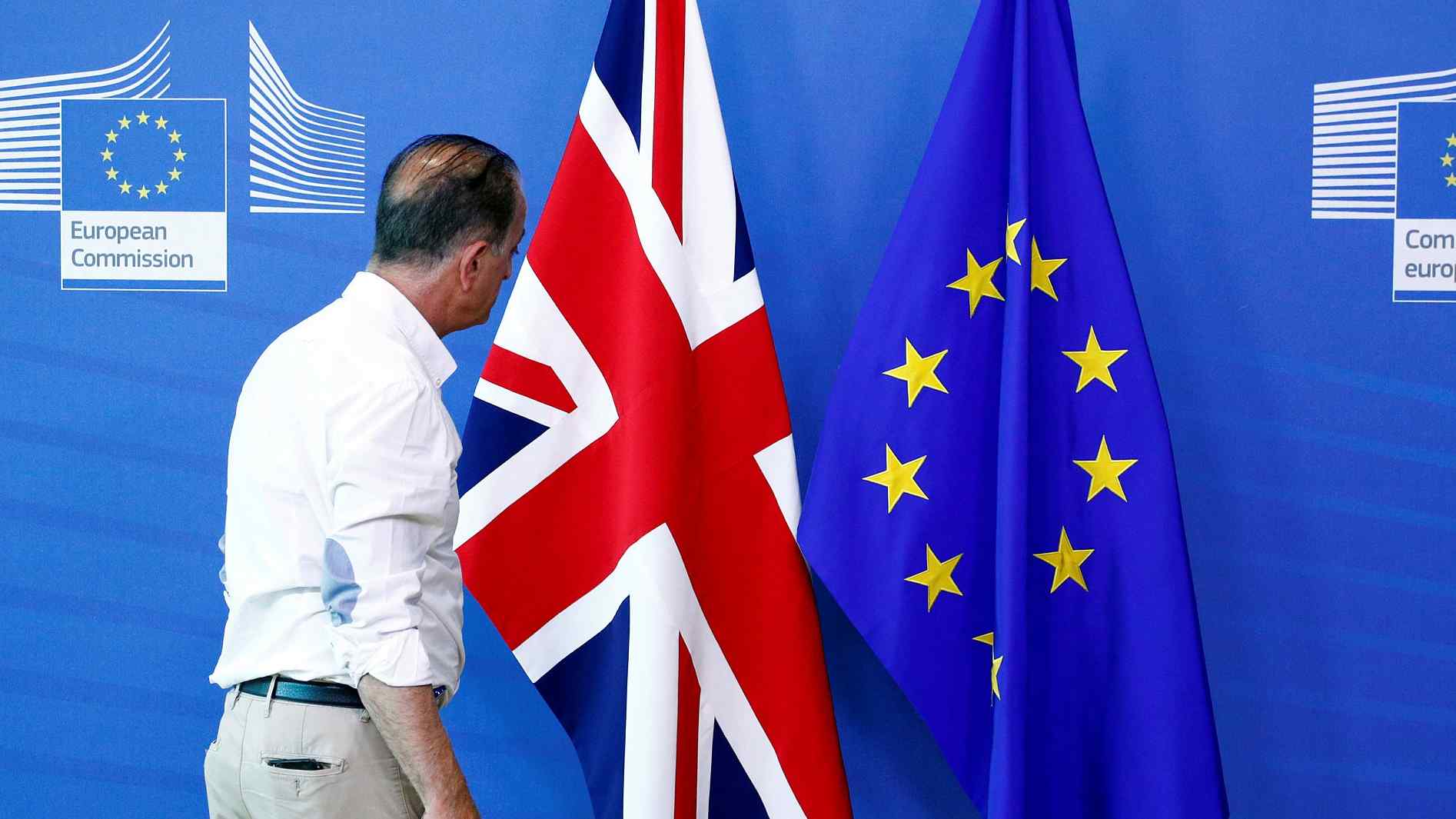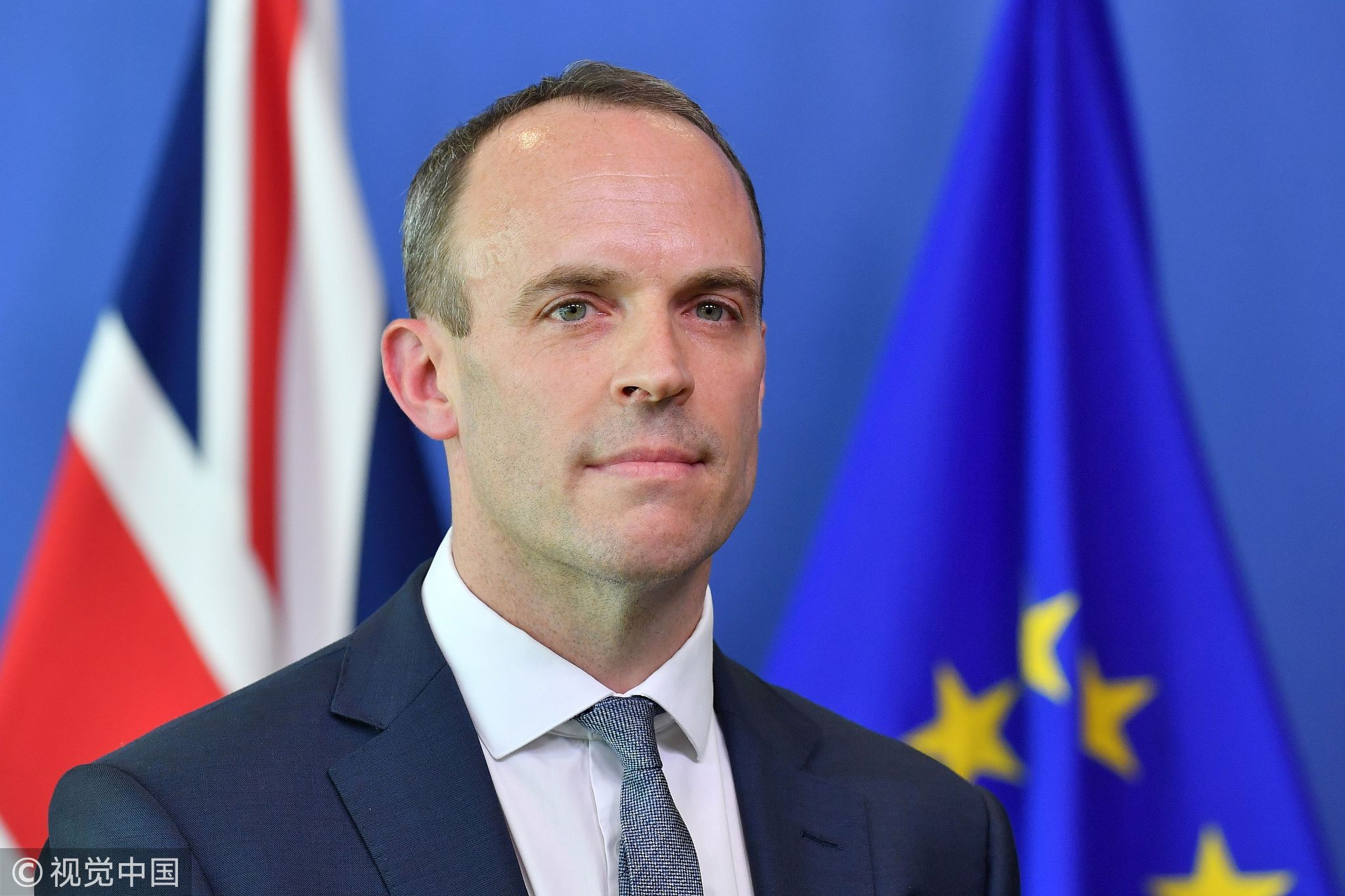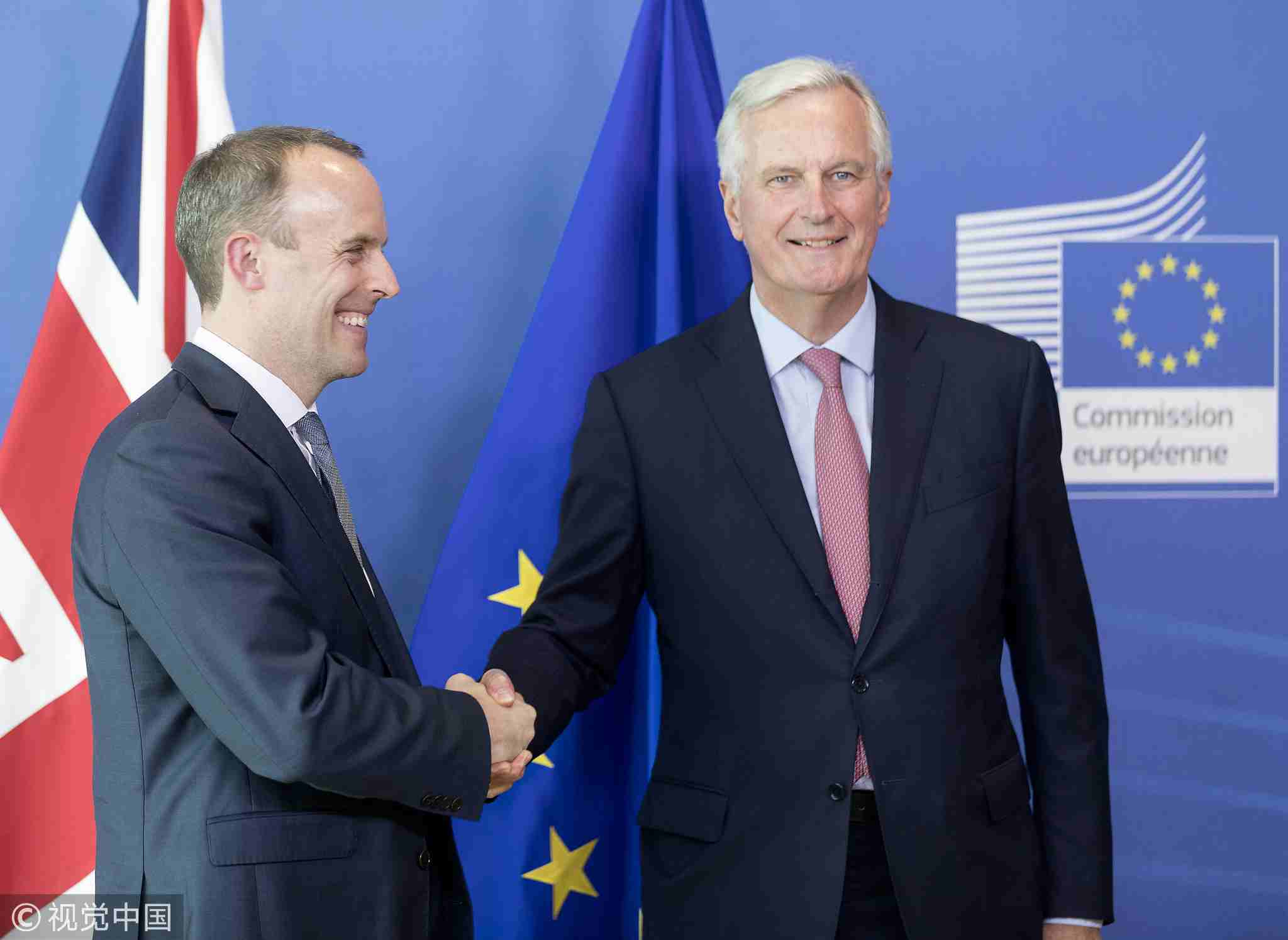
Politics
14:41, 20-Jul-2018
Latest Brexit talks, little fanfare and little progress
Updated
13:47, 23-Jul-2018
By Mariam Zaidi

The latest round of talks between the EU and UK as they prepare for the UK’s departure from the European Union, came and went on Thursday with little fanfare and – as expected – little progress.
With Brexit set for March 29th 2019 a casual observer may view that with alarm.
But to understand the lack of progress, you have to understand the circumstances that negotiators found themselves in, days before scheduled talks.
Ahead of negotiations, the usual daily Brexit chaos continued unabated across the English Channel, with the under-fire UK Prime Minister Theresa May battling her own MPs’ rebellion on Brexit policy. No doubt something she is quite used to by now.

Britain's Secretary of State for Exiting the European Union (Brexit Minister) Dominic Raab is pictured during a press conference at the European Commission in Brussels, July 19, 2018. /VCG Photo
Britain's Secretary of State for Exiting the European Union (Brexit Minister) Dominic Raab is pictured during a press conference at the European Commission in Brussels, July 19, 2018. /VCG Photo
Last Friday even saw the unveiling of a new UK Brexit Secretary in the form of Dominic Raab, following David Davis’s resignation.
Raab was given the task to present the Government’s latest White Paper. It was May’s vision for the post-Brexit relationship with the EU. One that had also seen the Foreign Secretary Boris Johnson resign from office.
But the White Paper was something the EU had long called for. The EU’s Chief Brexit Negotiator, Michel Barnier even took to twitter to congratulate the UK and said his team would look the paper over and see if it had workable solutions, adding he was looking forward to talks.
But that was last Friday. Then on Monday UK Prime Minister Theresa May’s Brexit blueprint also failed. Some of her disgruntled MPs have pushed for amendments and called for her head via a vote of no confidence. She did later on Wednesday survive being put out to pasture, but had to cave into demands to toughen up what they had called a “soft Brexit” approach.

British Secretary of State for Exiting the European Union Dominic Raab (L) is welcomed by the European Chief Negotiator for the United Kingdom Exiting the European Union, Michel Barnier (R) prior their first bilateral meeting in the Berlaymont, the EU Commission headquarters in Brussels, Belgium, July 19, 2018. /VCG Photo
British Secretary of State for Exiting the European Union Dominic Raab (L) is welcomed by the European Chief Negotiator for the United Kingdom Exiting the European Union, Michel Barnier (R) prior their first bilateral meeting in the Berlaymont, the EU Commission headquarters in Brussels, Belgium, July 19, 2018. /VCG Photo
So back to the negotiations. Its Monday morning in Brussels and an agenda for this week’s talks are still M.I.A. One finally appears online late afternoon. And any discussions on the future relationship have been shelved, in favor of continued talks on the Withdrawal agreement.
Prudent stuff from the EU side.
They have finalized roughly 80 percent of all matters regarding the UK’s withdrawal. A few loose ends need tying up. Plus a massive one; - the Irish border. But avoiding a hard border between Ireland and Northern Ireland at this juncture seems impossible given that the UK is still not willing to agree to a back-stop solution that would see Northern Ireland maintain regulatory alignment with Ireland should solutions be hard to come by.
Late on Thursday afternoon, the Brexit Two - Raab and Barnier trotted themselves out in front of the cameras. They exchanged a few polite words, shook hands and off they went.
The EU Commission on Thursday published a communication. It details seven things businesses in the (soon to be) EU 27 member states need to do to prepare for Brexit….especially if no withdrawal agreement is ratified and therefore no transition period (that cocoon’s the UK in EU rules) will take effect.

SITEMAP
Copyright © 2018 CGTN. Beijing ICP prepared NO.16065310-3
Copyright © 2018 CGTN. Beijing ICP prepared NO.16065310-3